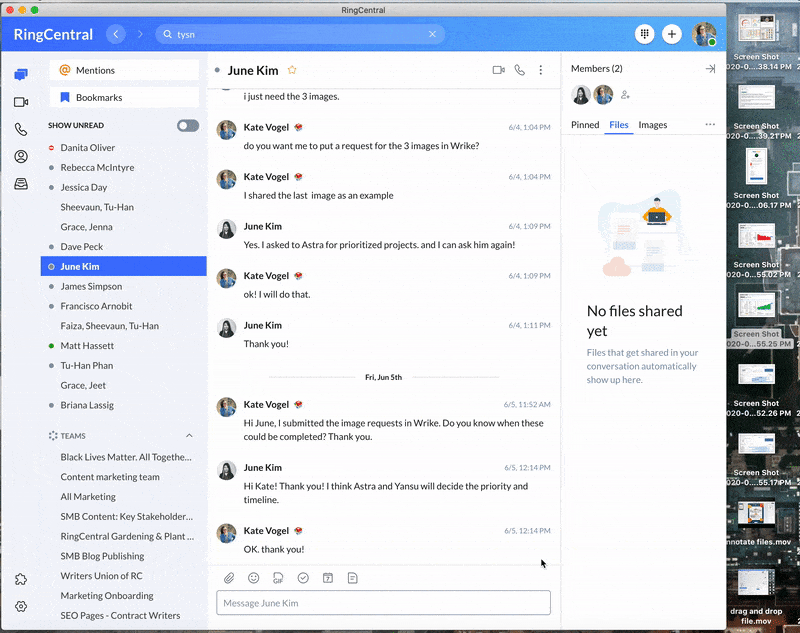Today, the way customers interact with organizations is evolving swiftly. Digital is king, and serving them across each channel is vital. Why? Because that is where they are and anticipate brands to be. They also expect timely and resolutive responses in such cases.
Companies who innovate and differentiate from their competitors have seen the light — moving towards integrating a live chat or messaging channel button on their site. Buttons that go to agents who have sufficient technology to manage them with fluency and ease. It’s challenging, of course, but there are solutions out there to help meet these expectations at a time when they have never been more demanding.
In this feature, we breakdown the definitive answers of what both live chat and team messaging are, plus we examine the various elements related to each one. It can aid you to make an informed decision on future channel integrations.
Let’s get started:
🔍 Communication Tools Checklist: Don’t overlook these must-have features.
What is live chat?
Live chat is a must-have for any brand’s website. We’ve all seen it: the little box that pops up in the bottom corner as we’re browsing a business page, offering help. You might even see it in the bottom right corner of this very blog!
Customers react positively to live chat; many far prefer it over email and phone. Live chat provides customers with real-time interaction they desire. Analytically, it is more adaptable than the channels mentioned above, easy to monitor, and cost-effective.
That’s why 44% of online consumers say that having questions answered by a live person during an online purchase is one of the most important features a website can offer.
The convenient and hassle-free nature of the channel is appealing to customers. Talking with a customer about an issue via the phone can be an excellent experience for them. However, it has one major disadvantage – it requires the use of a channel external to the website and involves waiting times. Live chat is integrated on your website and does not require to move from page to engage with customer support agents.
Also because it’s text-based, you have a transcript of every interaction. Many simple queries could be resolved by a combination of live chat and an online knowledgebase.
Everyone has a preference when it comes to contact channels. By offering a more extensive range of options, customers feel you are more conscious, exceeding expectations and more engrossed in what they want.
You can target customers who have a certain amount in their cart or those visiting pages that have a high dropout rate. It can be explicitly targeted at those customers, offering help, clarifying issues, and supervising objections at the right moment. Thanks to these triggers, live chat is a perfect way to assist customers proactively and answer their questions when they need it most.
What is messaging?
Messaging is an ongoing, asynchronous conversation that can be accessed at any time. And it isn’t limited to a chat bot; we message each other on social media platforms, in email apps, and on instant messaging programs at work every day.
The role of messaging remains increasingly essential. We use messaging apps daily to connect, and the number of users engaging on Facebook Messenger and WhatsApp demonstrates this. However, it does not stop there; now there’s an increasing number of companies using these messaging channels to meet demands placed by clients and prospects. This helps to answer the expectations of 75% of consumers who are more likely to purchase from a company that knows their name and purchase history and recommends products based on their preferences.
Messaging has instantaneous attributes along with push notifications if there is a reply. Conversations are also in a thread that can be useful for revisiting conversation history. Live chat, on the other hand, does not have this feature.
A lot of instant messaging platforms, especially RingCentral, offer a lot more than messaging, too. You can track tasks, create events, and even share files on the fly:

Oh, and RingCentral offers a 100% free team messaging option, with video calls built in!
Messaging is asynchronous, equipping customers to have continuous communications with brands when and where it is the simplest. Support agents utilizing messaging can examine previous messages in the thread to get up to speed on the situation facing the customer should it be managed by multiple representatives. In turn, it reduces friction; the customer does not have to repeat information.
By applying messaging to your digital channel strategy, it is easier to integrate media into threads or other rich media. You are simplifying it for agents who can share resolutive responses with rich and engaging media.
How to tell live chat and messaging apart
-
Conversation history
Messaging is asynchronous meaning it can keep a conversation history between agent and customer. Live chat is synchronous and does not keep the blocks of chat as historical data. If the customer leaves the page or doesn’t answer fast enough, the chat session ends, and they have to explain his problem again. With messaging, the conversation can continue in an asynchronous mode, removing the need to repeat the information, allowing for faster customer resolution.
-
Cross-device
Because the conversation history is not kept, live chat conversations cannot be pursued through multiple devices. If a customer starts chatting from his desktop and needs to leave, they are not able to continue the conversation on mobile. With messaging apps such as Messenger or Apple Messages, this is possible thanks to the sync of messages across devices.
-
Availability
To be offered as a contact channel to customers, live chat requires the presence of agents at all times. If no one from the customer service team is available or outside opening hours, live chat is not displayed on the website. On the other hand, messaging can be used by customers at any time. If an agent is available, they reply instantly; if not, the request can still be received by the brand and answered later.
-
Notification system
Live chat requires instant answers and to stay focused on the conversation to see the answer. Messaging notifies the user, allowing him to do something else while waiting for an answer.
-
Target customers directly
One of the specificities of live chat is the ability to send a pop up to customers browsing a specific page. This can be very useful to target qualified visitors and increase conversions. This approach can also be used with messaging through a website widget but is less common. Messaging is usually offered to all customers.
Live chat or messaging? The choice is yours
Live chat and messaging are some of the most common digital channels for customer service today. While live chat is mainly adapted to usage on a desktop for sales questions to provide immediate assistance, messaging can be used throughout the full customer journey, across multiple devices.
Messaging has more considerable advantages than live chat. The reason being that live chat has similarities to phone; long waiting times, queuing, each session is not held in a thread. Messaging, on the other hand, uses asynchronous communication, indicating that customers do not have to stay connected while waiting for a reply. When notified of new messages; the conversation history remains.
While live chat is only for synchronous conversations, messaging can either be used for synchronous or asynchronous communication, depending on customers’ and agents’ availabilities. Both channels are complementary to each other as they signal availability to customers at all times. By relying on a customer engagement platform, companies can easily manage both channels through a single interface.
Discover how RingCentral Engage Digital can help you integrate live chat and messaging into your business.
Originally published Sep 26, 2019, updated Jun 07, 2024




